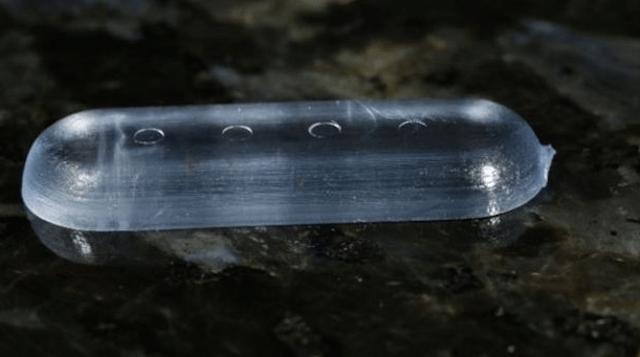The technology, unveiled today at the British Science Festival in Bradford, is claimed to have particular relevance for pharmaceutical, automotive and high value consumer products.
The anti-counterfeit marker is virtually invisible to the naked eye and impossible to detect by touch. It can be read using a laser scanner, allowing any product to be tracked and verified as authentic.

The technology was devised by the UK SME, Sofmat, and developed in collaboration with engineers from Bradford University.
According to the University, the 3D barcode is made up of tiny indentations in the surface of the product, created by pins which are integrated into its mould. Using micro actuators, the pins can be set at different heights, each step corresponding to either a letter (A-Z) or a number (0-9). The prototype – developed with funding from Innovate UK – works with a four pin array, enabling over 1.7 million different configurations.
“The system enables very small displacements to be made in each pin – each step being just 0.4microns, 100th of the width of a human hair,” said Dr Ben Whiteside, from Bradford University. “These have to be set with a very high accuracy, and with sufficient force so their position is maintained during the manufacturing process. While our system has been developed initially for products made from plastics or composites through injection moulding, it could also be used to stamp or emboss the code onto a product.”
Estimates for the total value of fakes sold worldwide each year reach as high as $1.8 trillion. Most anti-counterfeit devices are stuck onto the product or its packaging after manufacture, making them easy to copy. Because the 3D barcode is an integral part of the product itself it is very difficult to reproduce.
“A 3D barcode allows much more complexity than existing anti-counterfeit systems,” said Sofmat Director Dr Phil Harrison. “You can have multiple configurations, different codes on each individual product and additional details such as patterns on the heads of the pins themselves, making copying the code extremely difficult. For the first time the same technology and coding can be used on bulk packaging, individual packaging and on the actual product, making it much harder to create and ship fake products.”
The system has reportedly been verified in the laboratory using high-tech scanning devices including a white light interferometer and a laser-scanning confocal microscope to characterise the surface of the coded ‘product’ to ensure the code is accurately reproduced. A laser scanner is currently in development that will be able to read the code and wirelessly transmit the result via an app to either a phone or tablet.




Nanogenerator consumes CO2 to generate electricity
Nice to see my my views being backed up by no less a figure than Sabine Hossenfelder https://youtu.be/QoJzs4fA4fo